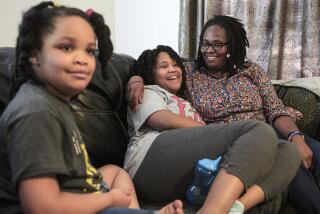1% of 8-year-olds diagnosed as autistic
CHICAGO — About 1 in 100 of America’s 8-year-olds have been diagnosed with autism spectrum disorder, according to U.S. Centers for Disease Control and Prevention researchers, who will be releasing details of their study later this year.
That’s a 50% increase from two years ago, when the government estimated the rate at 1 in 150.
Dr. Ileana Arias, deputy director of the CDC, said the agency considers the disorder “a significant issue that needs immediate attention.”
But the higher rate might not mean more kids have autism spectrum disorder, scientists cautioned.
“It is not clear more children are affected rather than just changes in our ability to detect,” said Dr. Tom Insel, director of the National Institute of Mental Health.
The rate, calculated by reviewing records in communities across the U.S., echoes findings of a national telephone survey of parents that is being published today in the journal Pediatrics.
The survey, conducted by the CDC and the Health Resources and Services Administration, asked parents of 78,000 children ages 3 to 17 whether healthcare workers or doctors had ever told them that their children had autism spectrum disorder.
Parents of 1 in 91 children said yes, and said their children currently have the disorder. For boys, the figure was 1 in 58.
Dr. Steven Goodman, an epidemiologist with Johns Hopkins Bloomberg School of Public Health, said he agrees that the prevalence is higher than years ago and that it merits concern. But he warned against panic.
“This has the tremendous potential to scare people,” Goodman said. “It is very unlikely that there has been an explosive increase in the way that has been portrayed in the media.”
No one knows what causes autism or how to cure it. Scientists think it may be many distinct problems that manifest themselves similarly. Afflicted children often have trouble communicating and socializing, and they can exhibit repetitive, rigid behavior.
Diagnosing autism relies on observation, behavioral checklists and expert assessment rather than lab tests or X-rays, making it hard to determine how common it is.
Interpreting data can be tough too. Growing awareness, wider screening and a push to identify the disorder earlier accompany the rise in the rate, but scientists have not figured out whether other factors are also at play.
Advocates in the autism community called for more funding for research and for family services.
“We have this amazing, terrible national health crisis on our hands at this moment,” said Lee Grossman, president of the Autism Society, based in Maryland. “We have millions of people affected by this, and the services and supports available to them are inappropriate and inadequate and in some cases a detriment.”
--






